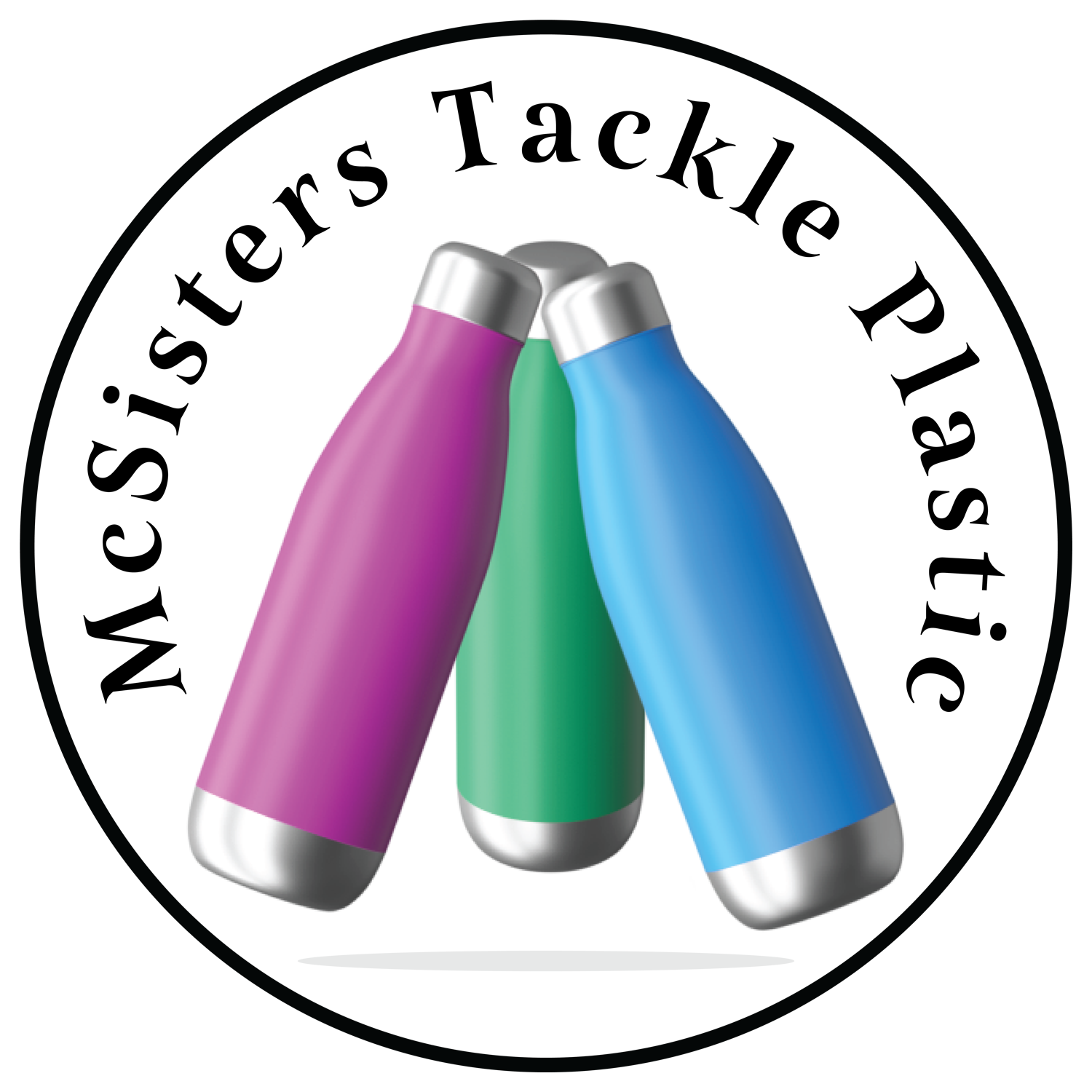A Plastic Free Work Environment
McSisters are delighted to introduce guest blogger Jana Koebel who describes herself as grant writer, plastic consultant, traveler, nomad, animal lover, and eco-warrior. We learned about Jana through Rotary as she is a consultant for a Rotary coral reef restoration project we support through our own Rotary clubs. Jana has traveled throughout the world seeing first-hand the health and environmental consequences of plastic pollution. Her knowledge pushed her to action and the development of Seas and Straws to spread information and knowledge about plastics and why and how to eliminate from our lives. Please visit Jana’s website https://www.seasandstraws.com to learn more about the harmful impacts of plastic and all the great work Jana is doing. Thank you, Jana, for your informative blog on how to eliminate plastic from the workplace and most importantly thank you for being an eco-warrior!
A plastic-free work environment
On average, we spend a whopping 40 hours a week in the same workspace (some more and some less), being productive.... and producing waste. Whether it's the morning latte-to-go from our favorite coffee shop, the pizza we order for lunch, or the Nespresso machine in the office kitchen, it's hard to go without plastic waste in the office. So how can you make sure your workplace isn't contributing to the growing environmental problem? Here’s a round-up of my best tips you, your team or your company can implement right away to make your work environment plastic-free.
What can you do?
Start at the beginning
Before you set out to buy the latest plastic-free trends or throw away all the plastic items you own, you need to be clear about your consumption habits. How many water bottles, snacks and coffees do you buy in a week? In a month? How often do you order food? What types of plastic items do you use frequently? Are they recyclable? Are there plastic-free alternatives you can look for? Changing your habits is the first step on the road to a plastic-free work environment.
Food and drinks
Whether you prefer to drink tea, coffee or water, being prepared can help you avoid buying something on the go that will not only empty your pockets, but will most likely be made of plastic.
Make your tea or coffee at home and pour it into a thermos.
Fill a second stainless steel bottle (they come in many different sizes) with water and take it with you. Having a water dispenser in the office where the team can fill up their bottles saves hundreds of disposable plastic bottles from ending up in landfills (and is much cheaper in the long run).
When brewing your tea or coffee at the office, try using organic loose tea (most tea bags contain plastic and don't belong in the organic trash can) and coffee without pods. A traditional coffee maker, an automatic coffee machine or a French press can eliminate packaging waste in the office. There are also reusable, universal steel capsules that fit most machines, and you can fill them with the ground coffee of your choice.
When it comes to meals, opt for an office lunch or a homemade lunch that you pack in plastic-free containers (such as glass, steel or bamboo) whenever possible.
Food is often ordered at meetings, but as a company, you can push for your takeout to be served in eco-friendly packaging and delivered without plastic bags, and you can decline plastic cutlery and disposable cups and use your reusable kitchenware instead. If you can, ask your boss to provide the team with branded cups or bottles (glass or steel, of course) so that plastic cups are not used.
Replace your office supplies
Even the most digitally-focused workers still need stationery, from pens and papers to diaries and notebooks. These easily contribute to our plastic waste, as most stationery, or at least some of its components, are made of plastic. We also replace them frequently, as experience has shown that they are easily lost. TherefoEvere, advocate for plastic-free office supplies wherever possible. This includes stationery, furniture and even cleaning supplies.
Some simple alternatives include refillable pens or pencils made from bamboo, cork or wood, or even pens with seeds that can be planted after use.
Use old mugs as pen holders, and notebooks and journals made from recycled paper without plastic inserts or covers.
Buy refillable soap dispensers in the kitchen and bathroom and buy soap in bulk. Solid soap bars in plastic-free packaging are a good option, too. They are not only much healthier, but also incredible economic and save the company money.
Opt for green and eco-friendly cleaning products that don't contaminate the water they come in contact with. They mostly come in plastic-free packaging such as glass or biodegradable paper.
Buy recycled toilet paper or choose paper made from bamboo.
Advocate!
Fighting against plastic pollution takes a whole community, so why not start with yours? If you’re in an office space, discuss sustainable alternatives with your boss or set up a voluntary committee to drum up some initiatives with your co-workers (all office-approved of course). If there are particular cafes you prefer to work from, why not build a rapport with the manager and see if they can transition out of single-use plastics? The options are limitless!
Interested in more practical tips on transitioning to a plastic-free life? Visit seasandstraws.com, where I cover everything from ocean pollution to zero waste life and travel. Guest blogger: Jana Koebel




